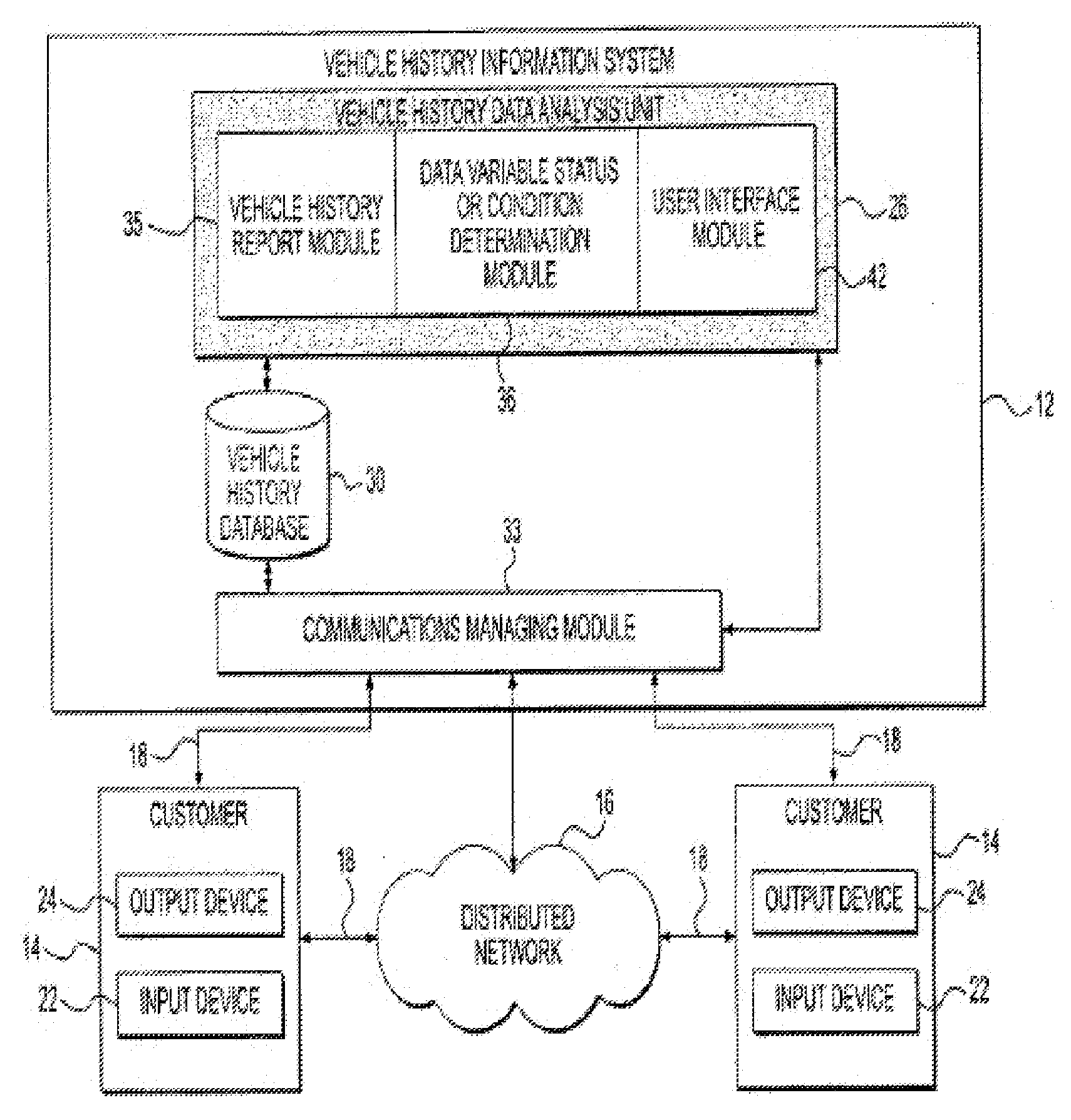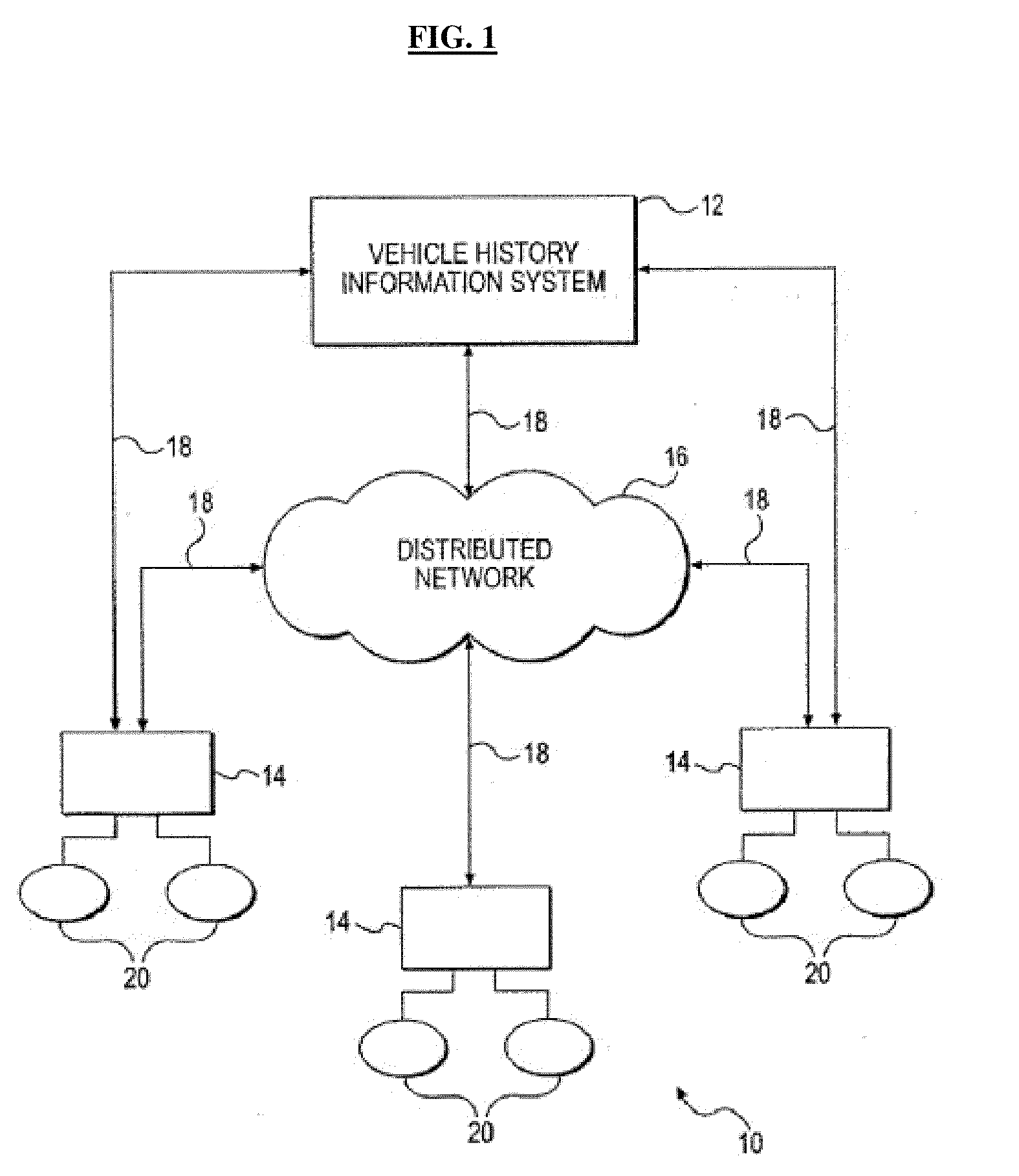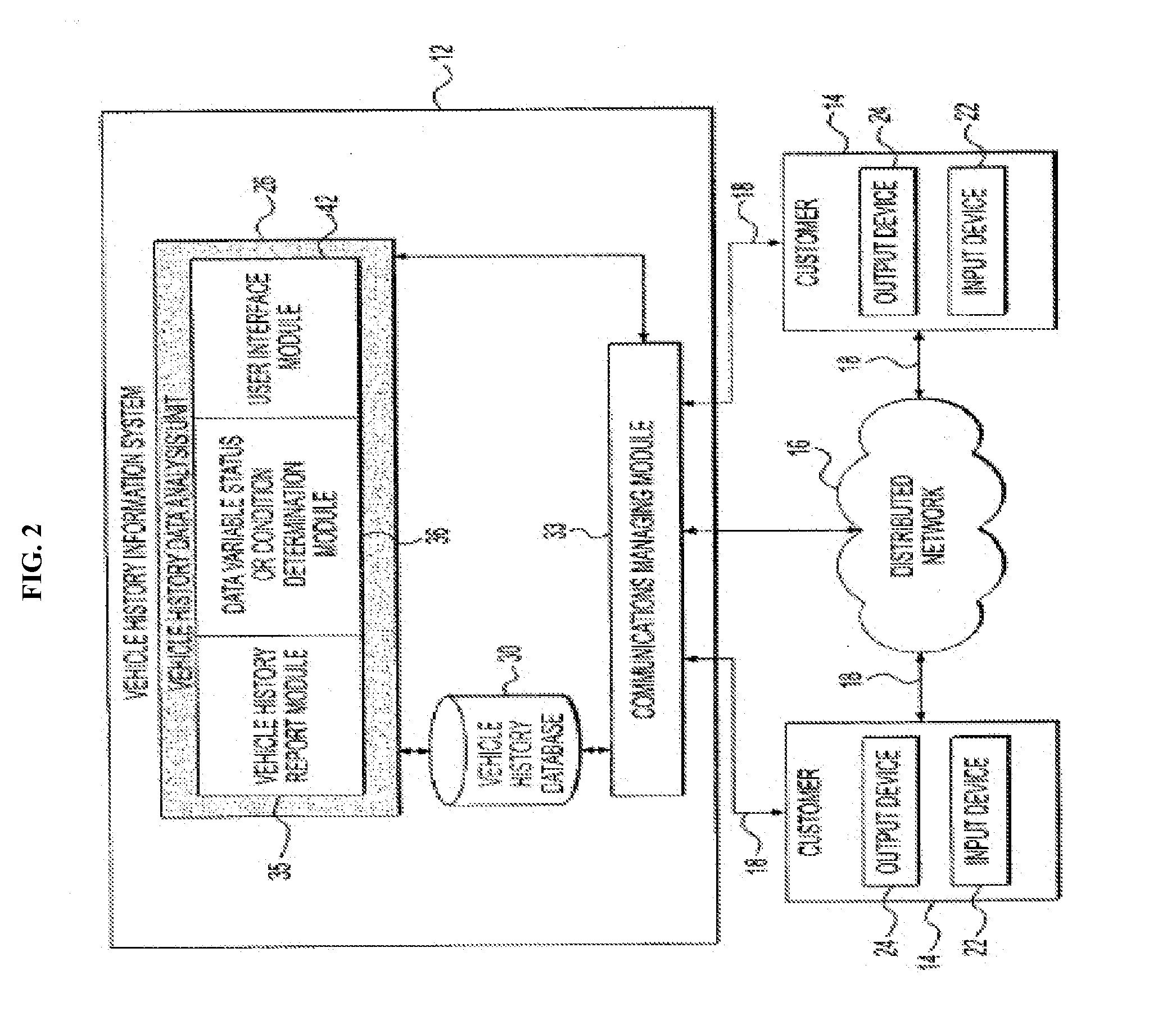Insurance claims and rate evasion fraud system based upon vehicle history
a fraud system and vehicle history technology, applied in the field of insurance claims and rate evasion fraud systems based upon vehicle history, can solve the problems of only working effectively, type of solution failing today, and fraud costing the industry enormous amounts of money
- Summary
- Abstract
- Description
- Claims
- Application Information
AI Technical Summary
Problems solved by technology
Method used
Image
Examples
example i
FIG. 8
[0080]In FIG. 8, at 800, the background of the determining step 164 is that the vehicle history database 30 contains service and registration data, and the request submits a VIN# 163. The logic of the embodiments proceeds through a decision process, asking “Does the current owner lease the vehicle?”801. If no, then potential fraud=false 802. However, if yes, then it is asked, “Does it appear that the vehicle is driven more than 15K miles / year 803. If no, then potential fraud=false 804. However, if yes, then potential fraud=true 805. This is based on the assumption information comes from a provider such as CARFAX™ that maintains an ownership database based upon public and private sources, and that the provider such as CARFAX™ employs a number of calculations to determine the annual mileage that a vehicle was driven over a yearly period.
[0081]Thus, the determining step here comprises determining if there is an indication that a vehicle is leased and a history that the vehicle is...
example ii
FIG. 9
[0082]In FIG. 9, at 900, the background of the determining step 164 is that the vehicle history database 30 contains service and registration data, and the request submits a VIN# 163. The logic of the embodiments proceeds through a decision process, asking “Has a vehicle history report been acquired within the last 90 days?”901. If no, then potential fraud=false 902. However, if yes, then it is asked, “Was the report requested by a consumer or auto dealer 903. If no, then potential fraud=false 904. However, if yes, then potential fraud=true 905. This is based on the assumption the vehicle history provider, such as CARFAX™, stores requests for Vehicle History as a standard business practice for billing purposes. This usage is compared to the requested vehicle identification number (VIN) to determine if the VIN has been requested in the past ninety days.
[0083]Thus, the determining step here comprises determining if there is an indication that a vehicle history report has been ac...
example iii
FIG. 10
[0084]In FIG. 10, at 1000, the background of the determining step 164 is that the vehicle history database 30 contains service and registration data, and the request submits a VIN 163. The logic of the embodiments proceeds through a decision process, asking “Has the vehicle been reported as stolen?”1001. If no, then potential fraud=false 1002. However, if yes, then it is asked, “Has the vehicle been reported as a recovered by a vehicle history source?”1003. If yes then potential fraud=false 1006. However, if no, then it is asked if the vehicle has been physically presented? 1004″. If yes then potential fraud=false 1006. If no then potential fraud=true 1005. This is based on the assumption the vehicle history provider, such as CARFAX™stores stolen records from a large number of police and private sources. In this context, physically presented indicates that the vehicle history provider has received a record that the vehicle has been verified as not stolen by a reputable source...
PUM
 Login to View More
Login to View More Abstract
Description
Claims
Application Information
 Login to View More
Login to View More - R&D
- Intellectual Property
- Life Sciences
- Materials
- Tech Scout
- Unparalleled Data Quality
- Higher Quality Content
- 60% Fewer Hallucinations
Browse by: Latest US Patents, China's latest patents, Technical Efficacy Thesaurus, Application Domain, Technology Topic, Popular Technical Reports.
© 2025 PatSnap. All rights reserved.Legal|Privacy policy|Modern Slavery Act Transparency Statement|Sitemap|About US| Contact US: help@patsnap.com



